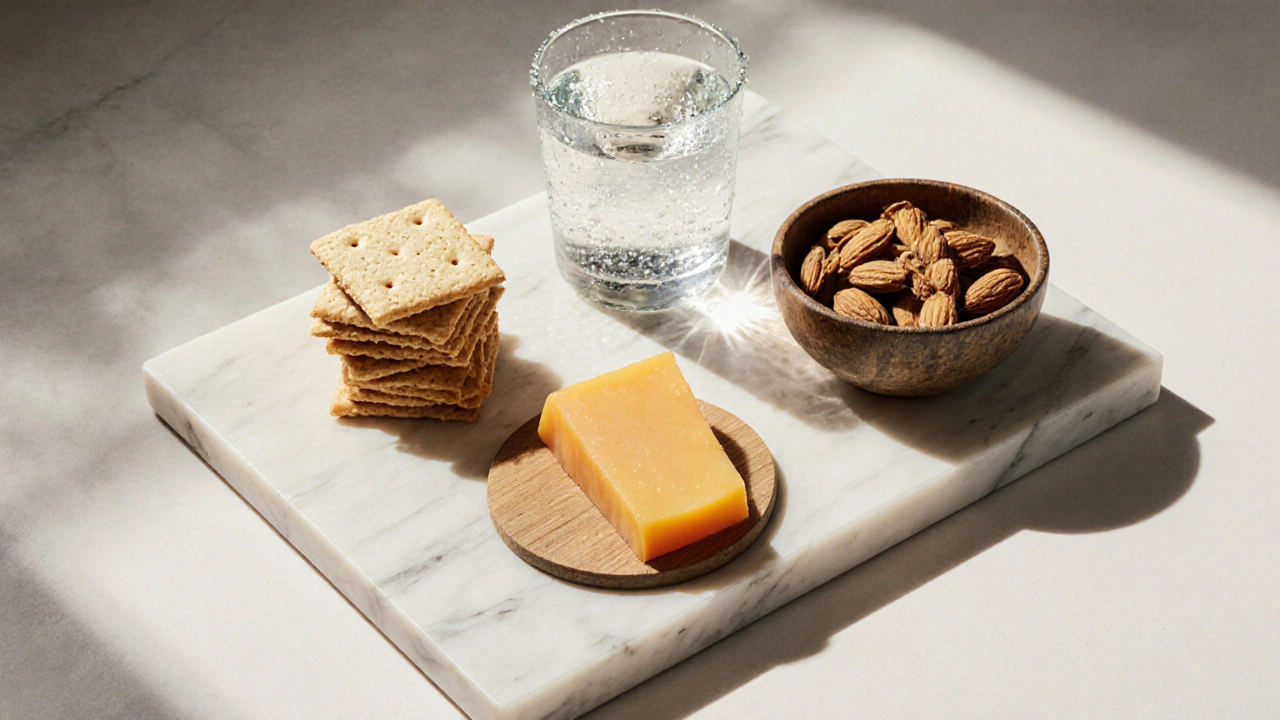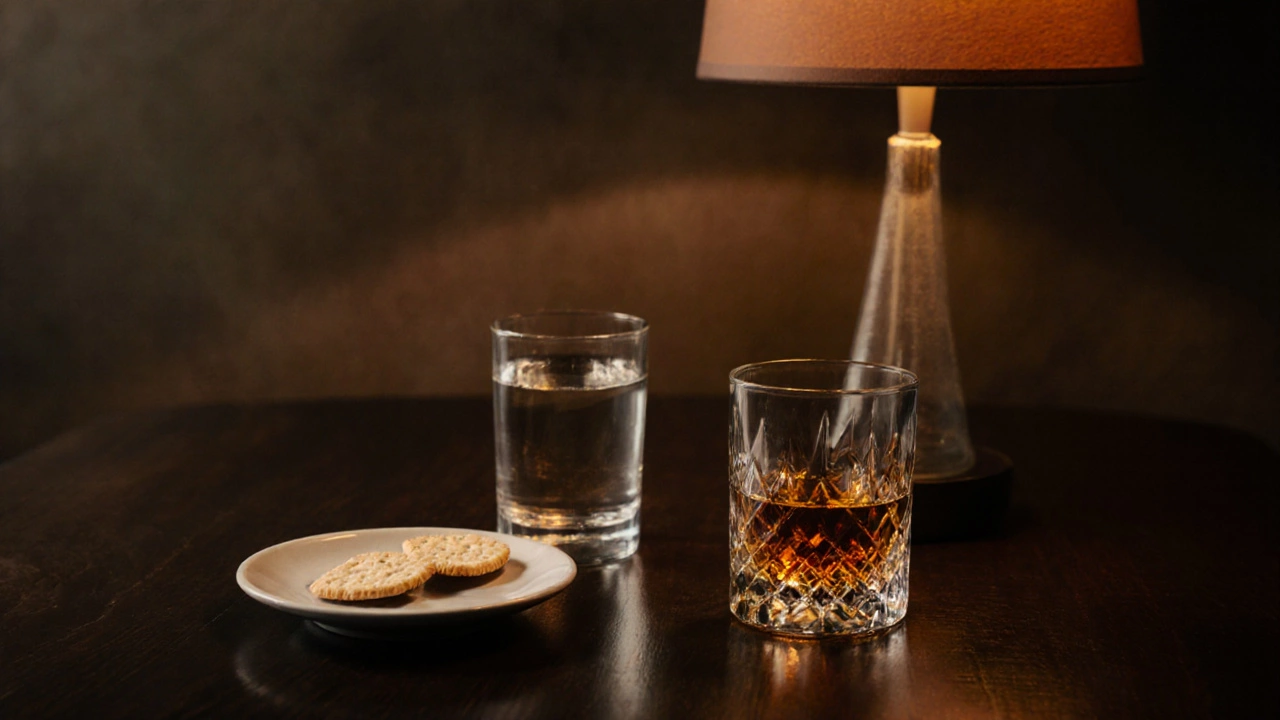When you sit down for a whisky tasting is a structured event where you sample multiple whiskies to compare flavors, aromas, and finishes, the whisky tasting food you choose between pours can make or break the experience. Too many flavors linger, too little resets the palate, and you’ll miss the subtle shifts that the next dram offers.
Why food matters between whisky pours
Whisky is a sensory marathon. Your nose, tongue, and even your mind adapt quickly to the first handful of notes. If you keep drinking without a break, the previous spirit coats your palate, muting the fresh aromas of the next sample. A well‑planned bite does three things:
- Neutralises lingering flavours - clears the tongue so you can detect new elements.
- Re‑hydrates - alcohol dries out the mouth, and a sip of water or a moist snack restores saliva.
- Provides a sensory contrast - a different texture or mild taste highlights the whisky’s character.
In short, the right snack acts like a reset button for your senses.
What makes a good palate cleanser?
A palate cleanser is any food or drink that refreshes the mouth without adding strong competing flavours. The ideal cleanser follows three simple rules:
- Neutral flavour - think plain, not spicy or overly sweet.
- Moderate moisture - enough to rinse the palate but not so much that it dilutes the next sip.
- Simple texture - crunchy or smooth, but not gritty.
With those criteria in mind, let’s look at the most reliable options.
Top 5 safe choices for every tasting
These foods tick all the boxes for a neutral, refreshing bite.
1. Water
Never underestimate the power of plain water is a calorie‑free liquid that rehydrates the mouth and washes away residual oils. A small glass between each dram is the simplest way to keep your senses sharp.
2. Plain crackers
Thin, unsalted plain crackers are a bland, lightly crunchy base that absorbs excess alcohol and provides a neutral canvas. Look for varieties made from wheat or rye without herbs.
3. Mild cheese
A modest slice of mild cheese such as a young cheddar or a creamy brie offers a gentle fat coat that softens the mouth while staying subtle enough not to mask whisky notes. Keep portions bite‑size.
4. Dried fruit
Unsweetened dried fruit like apricots or figs adds a touch of natural sweetness and a bit of chew, which helps to clear the palate without overwhelming it. Choose options without added sugar.
5. Roasted nuts
A handful of lightly salted roasted nuts such as almonds or cashews provides a crunchy texture and a hint of oil that balances the dryness of high‑proof whiskies. Stick to plain preparations.

Flavor‑focused pairings for the adventurous
If you want to highlight specific whisky characteristics, you can step beyond the neutral zone. These pairings are best saved for a themed tasting where the whiskies share a style (e.g., smoky Islay, sweet Bourbon).
- Dark chocolate - a square of dark chocolate (70% cacao or higher) brings out deep, roasted notes and balances smoky peat in a peaty Scotch.
- Smoked salmon - the salty, buttery profile pairs beautifully with a lightly sweet Highland malt.
- Charcuterie - thin slices of prosciutto or salami echo the spice in a rye‑forward Canadian whisky.
- Fresh berries - a spoonful of blueberries or blackberries amplifies fruit‑forward notes in a Speyside.
When using these, keep the portion small; you want a hint, not a takeover.
Building a tasting schedule with food
Organising your tasting flow helps you decide when to serve each snack. A common rhythm is:
- First dram - no food, just observe the nose.
- Second dram - sip, then a sip of water.
- Third dram - after the sip, enjoy a plain cracker.
- Fourth dram - follow with a small piece of mild cheese.
- Fifth and beyond - alternate between water, fruit, and nuts.
The pattern ensures you never go more than two drams without a reset.
| Food | Texture | Moisture | Best with whisky style |
|---|---|---|---|
| Water | Liquid | High | All styles - universal reset |
| Plain crackers | Crunchy | Low | Light, floral whiskies |
| Mild cheese | Soft, creamy | Medium | Rich, sherried malts |
| Dried fruit | Chewy | Low‑Medium | Fruit‑forward Speysides |
| Roasted nuts | Crunchy | Low | Peaty or high‑proof whiskies |

Common mistakes to avoid
- Strong flavours - skip spicy salsa, strong cheese, or heavily seasoned meats; they will dominate the whisky.
- Too much sugar - candied nuts or honey‑drizzled fruit can mask delicate notes.
- Over‑loading the palate - a handful is enough; large quantities leave residue.
- Skipping water - even with snacks, a sip of water between each dram is essential.
Stick to simple, neutral bites and you’ll keep the focus on the spirit.
Frequently Asked Questions
Can I use coffee as a palate cleanser?
Coffee is generally too bitter and aromatic, which can interfere with the whisky’s nose. A small amount of water or a plain cracker is a safer choice.
How much food should I serve between drams?
Aim for one bite‑size portion (about a teaspoon of cheese, one cracker, or a few nuts). The goal is a quick palate reset, not a meal.
Is it okay to drink water from a bottle or should I use a glass?
A clear glass is preferred because it doesn’t impart any plastic taste and you can see how much you’ve poured. The key is simply to sip between tastings.
Do salty snacks interfere with whisky flavours?
A light touch of salt can actually enhance sweetness, but heavy, salty snacks (like chips) may overwhelm delicate notes. Stick to lightly salted nuts or plain crackers.
What’s the best order for food and whisky?
Start with the lightest whisky (low‑ABV, floral) and most neutral snack, then move to richer drams paired with slightly richer bites. This progression prevents flavour overload.


